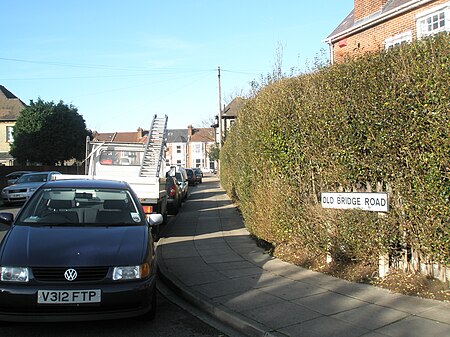Southsea is a seaside resort and a geographic area of Portsmouth, Portsea Island in England. Southsea is located 1.8 miles (2.8 km) to the south of Portsmouth's inner city-centre.
Southsea began as a fashionable 19th-century Victorian seaside resort named Croxton Town, after a Mr Croxton who owned the land. As the resort grew, it adopted the name of nearby Southsea Castle, a seafront fort constructed in 1544 to help defend the Solent and approaches to Portsmouth Harbour.In 1879, South Parade Pier was opened by Princess Edward of Saxe-Weimar in Southsea. The pier began operating a passenger steamer service across the Solent to the Isle of Wight. This service gave rise to the idea of linking Southsea and its pier to Portsmouth's railway line, and for tourists to bypass the busy town of Portsmouth and its crowded harbour. East Southsea railway station, along with the Southsea Railway and Fratton railway station were jointly opened on 1 July 1885 by Lady Ada Mary Willis (née Neeld), wife of General Sir George Willis, the Lieutenant Governor of Portsmouth.Southsea subsequently grew into a dense residential suburb and large, distinct commercial and entertainment area, separate from the town of Portsmouth up until Southsea and the whole of Portsea Island were incorporated into the town borough of Portsmouth in 1904.Due to declining use and World War I, the Southsea Railway line and its East Southsea station were closed on 6 August 1914. To maintain Southsea's tourism, the Southsea station name was moved and merged with Portsmouth's main town centre railway station in 1925, officially becoming known as Portsmouth & Southsea railway station. A year later in 1926, Portsmouth was granted official city status, while its main railway station retained its "Portsmouth & Southsea" name, which has led many non-locals and visitors to wrongly assume that Southsea is still a separate town near to Portsmouth.The areas of Southsea surrounding Albert Road, Palmerston Road, and Osborne Road contain many bars, restaurants and independent shops. Palmerston Road is the main High Street of Southsea and contains various shops and restaurants, as well as the local library, and Southsea Community Cinema and Arts Centre. Albert Road is a distinct street containing shopping and cultural venues, which include The Wedgewood Rooms, and the Kings Theatre, a regional theatre built in 1907.Southsea retains its own post town status (PO4 and PO5), even though the actual town of Southsea was merged into Portsmouth in 1904.











